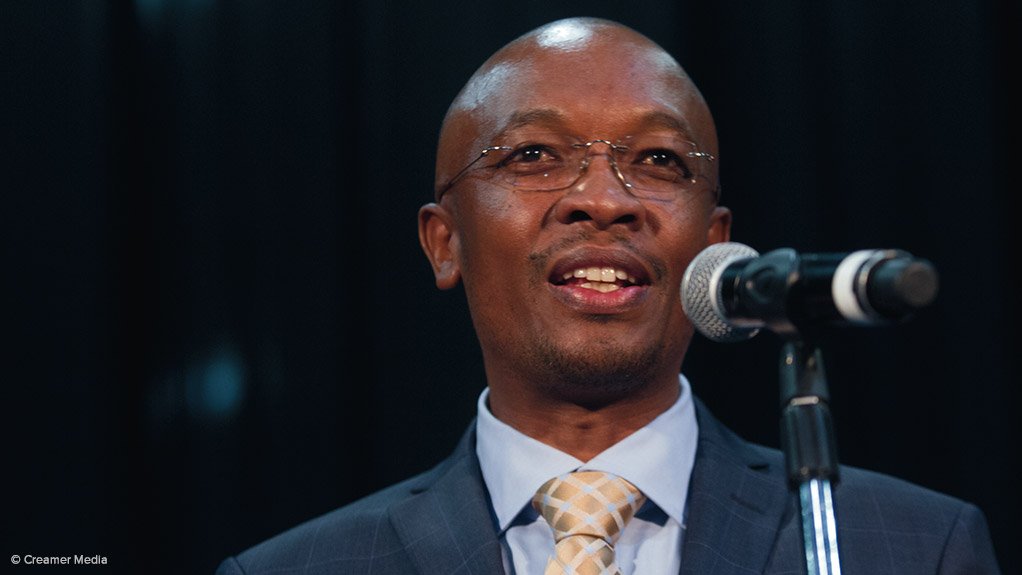Report highlights need for spatial transformation in South African cities
Deputy Cooperative Governance and Traditional Affairs Minister Andries Nel has stressed that cities must use public resources in the most effective, transparent and accountable manner.
Speaking at the launch of the State of South African Cities Report 2016, on Wednesday, he pointed out that local government had spent R347-billion in municipalities throughout South Africa over the past five years, and that 80% of the funds had been spent in municipalities with unqualified audits.
The report stated that, with mounting job losses and the economic downturn affecting both the rich and the poor, attention was increasingly being focused on the role of cities in stimulating and supporting economic development.
South African cities had been driving growth and generating nearly two-thirds of the country’s economic activity and just over half of all national employment.
“Cities drive the world’s economy and South Africa’s metros accounted for 44% of the country’s gross domestic product (GDP) in 2012,” Nel said.
According to the Centre for Development and Enterprise, eight of the country’s largest cities were home to 77% of South Africans, and accounted for 59% of economic activity.
However, considering how cities were designed in the past, they excluded many people from participating in the economy and accessing opportunities in various ways.
“Yet, they continue to attract many from rural areas and less prosperous cities, towns and villages in South Africa and beyond – people who are in search of work and a better quality of life,” said Johannesburg mayor Parks Tau, pointing out that the City of Johannesburg attracted 10 000 migrants a month who were in search of opportunities.
This migration and urbanisation presented a new set of challenges that included inadequate accommodation, access to water, sanitation and electricity.
“If we don’t manage urbanisation well, we will experience its downside, which includes a higher concentration of urban poverty, environmental degradation and unsustainable city growth,” he said.
He highlighted that, in Johannesburg specifically, a lot of attention had been focused on spatial and land-use policy, and that a spatial development framework and a spatial vision for the city had been drawn up.
“Consolidation of cities is critical and it is important that people have access to opportunities in close proximity to where they live.”
He noted that the Corridors of Freedom initiative, which set out well-planned transport arteries in and out of Johannesburg, was also critical for the city and would “stitch Johannesburg together, accepting that we have inherited a city designed for exclusion.”
Tau noted that it was important to significantly increase density along these identified corridors, so that people could congregate in closer proximity to where opportunities were.
Nel agreed that spatial transformation was critical to the growth and development of South African cities.
“Few arrive with the skills and resources to compete for jobs in the city and these formal employment opportunities are becoming increasingly scarce. The result is increased poverty, unemployment, overcrowding and social tension,” he said.
He stated that South Africa had adopted an Integrated Urban Development Framework (IUDF), which was approved by Cabinet in April.
Nel explained that the IUDF provided a roadmap to implement the National Development Plan's vision for spatial transformation – creating liveable, inclusive and resilient towns and cities while reversing the spatial legacy of apartheid.
“The objective is to transform urban spaces by reducing travel costs and distances, preventing further development of housing in marginal places, increasing urban densities to reduce sprawl, and shifting jobs and investment towards dense peripheral townships,” said Nel.
The framework also recognised that the country had different types of cities and towns with different roles and requirements.
Meanwhile, South African Local Government Association CEO Xolile George said that, to tackle unemployment and inequality, local government needed more assistance.
“Thanks to the emergence of the IUDF, we now have greater opportunities to tackle these challenges that have been brought about by spatial injustice.”
He added that government also had to appreciate the continuum between rural and urban areas.
“Spaces are interconnected and the opportunities this presents for us as local government is that we can promote balanced economic development while placing emphasis on cities,” he said.
Comments
Press Office
Announcements
What's On
Subscribe to improve your user experience...
Option 1 (equivalent of R125 a month):
Receive a weekly copy of Creamer Media's Engineering News & Mining Weekly magazine
(print copy for those in South Africa and e-magazine for those outside of South Africa)
Receive daily email newsletters
Access to full search results
Access archive of magazine back copies
Access to Projects in Progress
Access to ONE Research Report of your choice in PDF format
Option 2 (equivalent of R375 a month):
All benefits from Option 1
PLUS
Access to Creamer Media's Research Channel Africa for ALL Research Reports, in PDF format, on various industrial and mining sectors
including Electricity; Water; Energy Transition; Hydrogen; Roads, Rail and Ports; Coal; Gold; Platinum; Battery Metals; etc.
Already a subscriber?
Forgotten your password?
Receive weekly copy of Creamer Media's Engineering News & Mining Weekly magazine (print copy for those in South Africa and e-magazine for those outside of South Africa)
➕
Recieve daily email newsletters
➕
Access to full search results
➕
Access archive of magazine back copies
➕
Access to Projects in Progress
➕
Access to ONE Research Report of your choice in PDF format
RESEARCH CHANNEL AFRICA
R4500 (equivalent of R375 a month)
SUBSCRIBEAll benefits from Option 1
➕
Access to Creamer Media's Research Channel Africa for ALL Research Reports on various industrial and mining sectors, in PDF format, including on:
Electricity
➕
Water
➕
Energy Transition
➕
Hydrogen
➕
Roads, Rail and Ports
➕
Coal
➕
Gold
➕
Platinum
➕
Battery Metals
➕
etc.
Receive all benefits from Option 1 or Option 2 delivered to numerous people at your company
➕
Multiple User names and Passwords for simultaneous log-ins
➕
Intranet integration access to all in your organisation





















